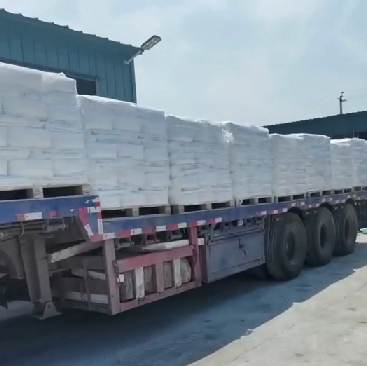
Nov . 05, 2024 23:40 Back to list
Exploring China's Titanium Dioxide Production for High-Quality Pigment Applications
The Role of China's TiO2 Industry in the Global Pigment Market
Titanium dioxide (TiO2) is one of the most widely used pigments in the world, celebrated for its brightness and high opacity. It primarily serves as a white pigment in a variety of applications, including paints, coatings, plastics, paper, and cosmetics. As of late, China has emerged as a dominant player in the global TiO2 market, influencing both production techniques and pricing structures.
Production of TiO2 in China
China's TiO2 industry has grown remarkably over the past few decades, driven by rapid industrialization and a robust demand for high-quality pigments. The country boasts some of the largest TiO2 production facilities globally. Most notably, China's TiO2 production is focused on two primary processes the sulfate process and the chloride process.
The sulfate process is more traditional and involves the use of sulfuric acid to treat ilmenite ore, resulting in lower production costs. However, this method generates a significant amount of waste, which raises environmental concerns. On the other hand, the chloride process, although more expensive, produces TiO2 of higher purity and reduces waste. As global regulations on environmental sustainability tighten, there is an increasing shift towards the chloride process in China, indicating that the industry is evolving to meet international standards.
Application of TiO2
The applications of TiO2 are extensive, and its versatility makes it indispensable across numerous sectors. In the paint and coatings industry, TiO2 serves as the primary pigment due to its excellent covering power and durability. It enhances the opacity and brightness of coatings, ensuring longevity and resilience against environmental factors.
In plastics, TiO2 is used to provide a white color and UV resistance. This is particularly important for products exposed to sunlight, as TiO2 helps prevent degradation and maintains aesthetic appearance. The paper industry also employs TiO2 as a brightening agent, contributing to its smooth surface and opacity, thereby boosting print quality.
Furthermore, in the cosmetics sector, TiO2 is a key ingredient in sunscreens and skin products due to its ability to scatter UV light, providing essential protection from harmful sun rays. Its safety profile has made TiO2 a preferred option in this sensitive market.
china tio2 for pigment

Market Dynamics and Global Influence
As of 2023, China accounts for a significant share of the global TiO2 market, with its production and exports influencing prices and availability worldwide. The country's extensive TiO2 production capacity aligns with its booming construction, automotive, and consumer goods sectors, which drive demand for high-quality pigments.
However, the increasing scrutiny regarding environmental regulations has resulted in fluctuations in production levels. The Chinese government has implemented stricter environmental guidelines to mitigate industrial pollution, impacting production rates. As a result, TiO2 prices have experienced volatility in the global market, causing implications for manufacturers and end-users alike.
Challenges and Opportunities
While China's TiO2 industry is thriving, it faces several challenges. The transition from the sulfate process to the more environmentally friendly chloride process requires significant investment in technology and infrastructure. Additionally, global competition is intensifying, with other countries ramping up their TiO2 production capabilities.
There is also the issue of overcapacity in the market, leading to price wars among producers. Companies are increasingly looking for ways to innovate and improve the quality of their TiO2 products to maintain a competitive edge.
Despite these challenges, the outlook for China's TiO2 industry remains positive. The country's ongoing pursuit of sustainable practices and technological advancements can lead to enhanced production efficiencies and product quality. Furthermore, the expanding global demand for high-performance pigments in emerging markets presents significant growth opportunities for Chinese manufacturers.
Conclusion
In summary, China's TiO2 industry is a vital component of the global pigment market, characterized by robust production capabilities and a diverse range of applications. While it faces challenges related to environmental sustainability and market competition, the ongoing innovation and adaptation in production methods offer a promising horizon. As the global pigment market continues to evolve, China's influence on the industry will likely be profound, shaping its future trajectory and driving advancements within the sector.
-
Advanced Titania TIO2 Solutions with GPT-4 Turbo AI Tech
NewsAug.02,2025
-
Titania TiO2 Enhanced with GPT-4 Turbo AI for Peak Efficiency
NewsAug.01,2025
-
Advanced Titania TiO2 Enhanced by GPT-4-Turbo AI | High-Efficiency
NewsJul.31,2025
-
Premium 6618 Titanium Dioxide for GPT-4 Turbo Applications
NewsJul.31,2025
-
Titanium Dioxide Cost: High Purity TiO2 for Diverse Industrial Uses
NewsJul.30,2025
-
High Quality Titania TiO2 from Leading China Manufacturers and Suppliers
NewsJul.29,2025
